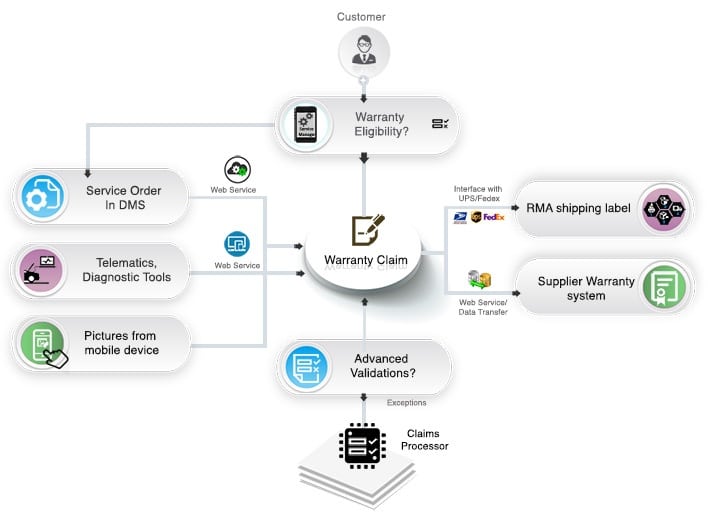
Automate Warranty Claims Processing
Warranty Managers are faced with a dilemma on deciding the level of automation in claim processing. Automated approvals can lead to more efficiencies, but may result in excess payments from overcharges and even fraudulent claims.
The benefits of automated claims adjudications are:
- Cost savings from less staff required for manual review of claims
- Improving dealer satisfaction with faster claim payment
- Faster processing of related transactions such as parts return and supplier recovery
The expected downside effects of automated claim processing are:
- Overpayment of parts, labor or other charges
- Payment of fraudulent or excessive claims
- Missed opportunities to reduce warranty costs
Just because a claim is reviewed manually does not mean, the claims processor can catch all the errors the system is not able to. While processor’s experience and knowledge can help identify issues that software may not find, it is still hard to check against a large volume of products, historical claims, and other reference information. Companies can leverage the knowledge of the claims processors when making a decision with incomplete or uncertain information, whereas warranty software systems can help automate the most of the data checks using business rules, reference or historical data.
Best practices in claim auto processing
Warranty departments can achieve close to 80% claim automation while minimizing downside effects but need first to implement systems and practices for
- Validating claims using business rules
- Checking claims against reference data
- Profiling repairs based on historical claims
- Risk scoring claims to support claim decisions
- Automating all claims related processes to reduce manual data entry
Business rules to validate claims data

Business rules within claims processing software can help identify most claim data errors. By capturing these errors during claim entry stage, you can have the dealers or claim submitters provide more accurate data reducing the number of claims with errors pending for review.
The Warranty software system you use needs to have an extensive set of business rules and also provides the flexibility to allow warranty business users to easily fine tune and update these rules without time-consuming development efforts.
Check claims against reference data
Verify the claim data by checking against warranty entitlements, Product BOM, parts catalog, standard repair times (SRT), quality failure coding, parts invoices, and cross reference data that relates component code to labor or parts. These checks can assure the quality of the claims data, but companies need to maintain the reference data to keep it accurate.
The business rules also depend on proper reference data to validate claims. Some companies may not have the data readily available, but these data relationships can be built over time to help cross-check the claim data.
Repair profiling based on historical claims data
Standardize claim failure based on causal part, component, complaint, cause and corrective action. Prepare a repair profile based on the product model, component, and failure descriptions. You can identify a list of parts, labor time based on this repair profile. When you check the claim against this repair profile to determine if the claim falls within the parameters for the repair, you can ensure that claim is within previously approved criteria. Repair profiling also helps for the system to continuously learn about repair profiles without someone manually updating this criterion.
Claim risk scoring to support claims decisions
Define a methodology to score the claim based on risk assessment. The scoring can be based simple criteria such as claim amounts and frequency, or by using advanced analytics such as data mining algorithms to detect anomalies. You can assign a claim score 1-100 based on weighted criteria and decide your threshold to review a claim manually.
Automation of claim related processes
Reduce manual entry of claims data by automating the claims data exchange starting with the ability to upload claims from repair orders. Claims processors can streamline the claims processing by capturing the comments, pictures, and any other communications. Automate parts return process by identifying the parts to be returned using pre-defined return policies or requests. Automate the generation of supplier claims from dealer claims. Capture all claim related communication in one place.

Automating warranty claims processing doesn’t have to be a daunting task. Following these best practices, as collated by years and years of experience, your processing will not only become more efficient, but also more accurate.